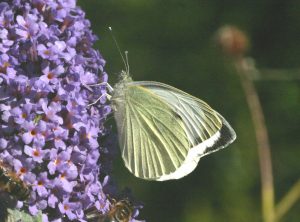 So, eventually, last week some sunshine and higher temperature arrived. In the garden Buddleias, Sedums, Scabious, heathers and mints were all in flower as if waiting for the butterflies. I expected at least small tortoiseshells and peacocks but neither turned up and there were only three butterflies on all of the nectar sources. Two of the butterflies were a surprise as they were speckled woods and they seemed to alternate between the Buddleias and the mints. This essentially woodland butterfly has been one of the few success stories for butterflies. In the 1970s it colonised most of Moray and in the early 1990s it spread through Easter Ross and Sutherland. Since 2000 it has colonised some areas of Caithness and north central Sutherland – success indeed.
So, eventually, last week some sunshine and higher temperature arrived. In the garden Buddleias, Sedums, Scabious, heathers and mints were all in flower as if waiting for the butterflies. I expected at least small tortoiseshells and peacocks but neither turned up and there were only three butterflies on all of the nectar sources. Two of the butterflies were a surprise as they were speckled woods and they seemed to alternate between the Buddleias and the mints. This essentially woodland butterfly has been one of the few success stories for butterflies. In the 1970s it colonised most of Moray and in the early 1990s it spread through Easter Ross and Sutherland. Since 2000 it has colonised some areas of Caithness and north central Sutherland – success indeed.
The other butterfly was a single large white and you can get an idea of its size by the photograph of the one in the garden as it takes nectar from a cascade of Buddleia blossoms. This is the legendary “cabbage white” disliked by gardeners for the damage the caterpillars do to “greens”. However, despite its reputation it is an interesting species as it sometimes migrates to us in extremely large numbers. There are records of vast swarms numbering millions coming from the continent. There is an old record for Norfolk of an estimated six million large whites being caught on the sticky leaves of insectivorous sundews. On a much smaller scale I remember being on the east coast of the Highlands and seeing great swarms of large whites coming over the sea. They landed onto the sand and mud, exhausted and were gobbled up by numerous gulls that had gathered for the feast. Afterwards the shoreline was littered with layer of white wings after the gulls had neatly taken the bodies.
Back in the garden I was still trying to find any more butterflies as surely with the high temperatures there should have been more. However, what was far more than compensation was a small moth fluttering, as only moths can, on the Buddleias. It was small, being only about 40 mm across the wings, but it had tell-tale markings on its wings. This is one of the moths I always look forward to seeing each year and its name comes from the tiny silvery mark on each on its forewings. It looks like a silver Y although some people says it is like the symbol for the Greek alphabet gamma that also looks like a Y. Great numbers of silver Y moths appear from the Continent in some years and one person in Essex catching moths at night with a trap recorded 7,398 of silver Y’s in one night. The early migrants in the spring give rise to a second generation in the summer and these are recorded as far north as Shetlands and Orkney. The silver Y flies, unusually, at night as well as by day so why not go out tonight and see if there are any on blossoms in your garden? There is another unusual fact about the silver Y moth as the males have small tufts of hair on their abdomen and these protrude during courtship and release chemicals called pheromones that attract the females.
As I write the sunshine is still here and the temperatures still up and this morning along the roadside verge was a Scotch argus, a typical roadside verge butterfly. So perhaps there are more butterflies still to come such as the meadow brown. One favourite of mine that should be around is the common blue with the males that bright blue that is almost indescribable. The females lay their eggs on bird’s foot trefoil and it is well worth looking as they are laid singly and are very bright shining white.
Tags: highland wildlife
